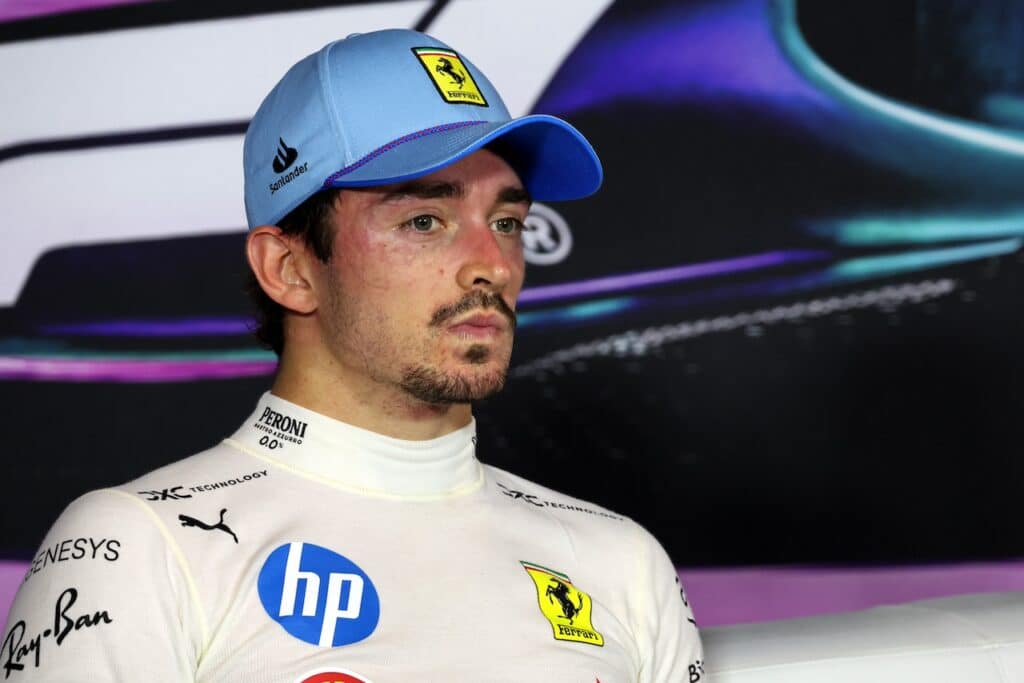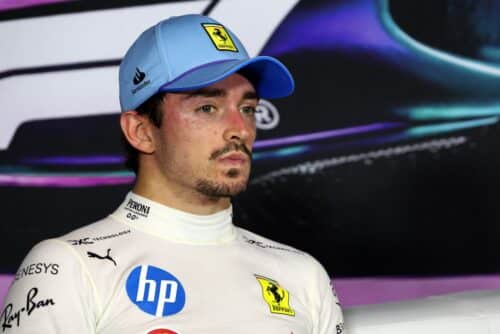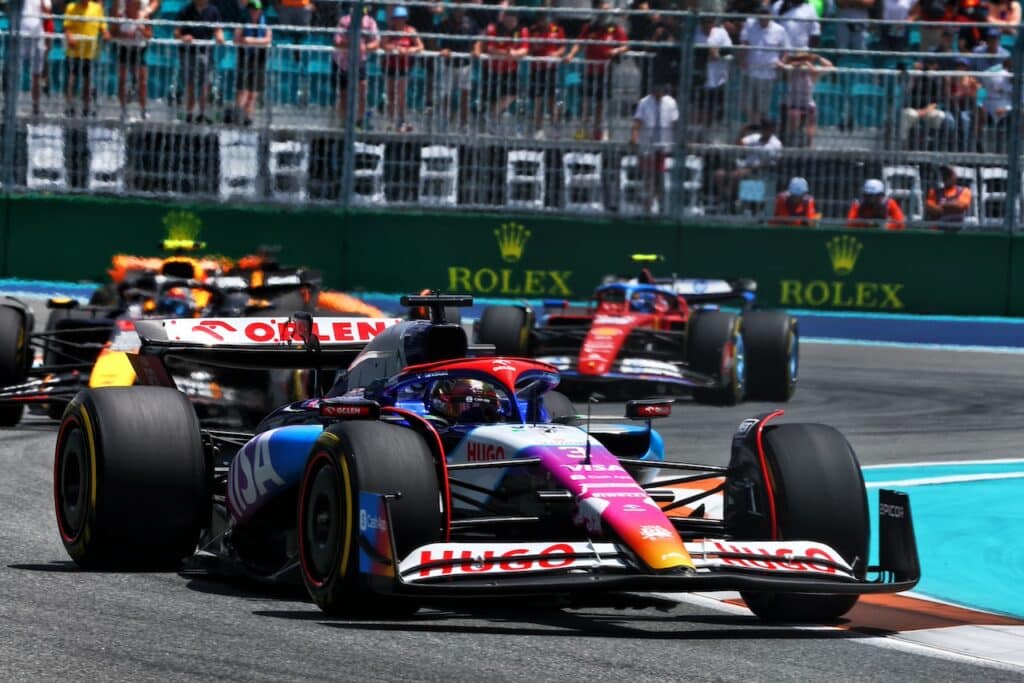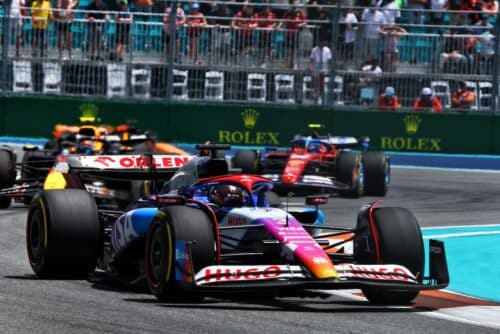F1 | Emilia Romagna GP: analysis of qualifying
Let's retrace the most important moments of Saturday in Imola
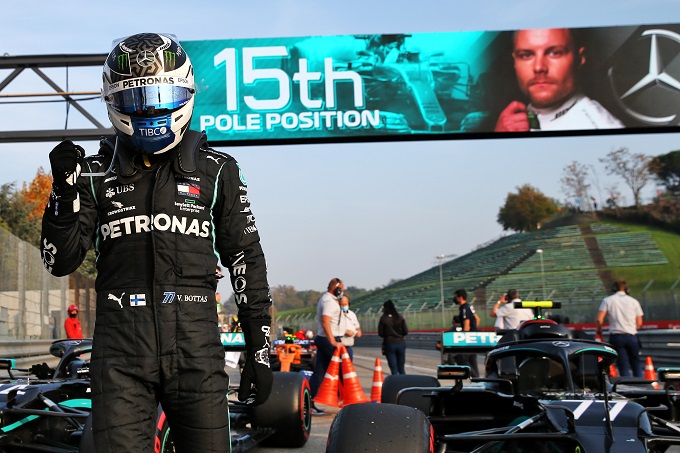
After fourteen years of absence, Imola has finally returned to the Formula 1 calendar, immediately winning appreciation and positive opinions from all the drivers. It did so with a particular format, designed not over the classic three days, but only over two, eliminating the Friday free practice sessions for logistical reasons and extending the Saturday morning session by thirty minutes. Being a track for which there were few references for the teams and on which the majority of the drivers had only ridden in the minor categories, the work of perfecting the set-up in view of qualifying and the race would have been particularly intense from the first minutes . What had seemed clear since the tests, however, was that Mercedes would predictably once again be the team to beat, both on the flying lap and on the pace, something also confirmed in the afternoon in qualifying, where the Stuttgart team then managed to conquer the entire front row, inflicting significant gaps on all opponents.
The one who prevailed in the internal battle was Valtteri Bottas, who has generally always had a good relationship with the "green" tracks, managing to prove himself very competitive especially on Saturdays. He did it again this time, putting his teammate, Lewis Hamilton, behind him, about a tenth behind and with the regret of not having been able to put together a clean lap like that of the Finn. Unlike the previous events, where he had substantially reduced the gap from the pacesetters, it was not a simple afternoon for Red Bull, not only due to the gap of around six tenths suffered by the poleman, but also due to the reliability problems encountered during Q2 which could have put an early end to the qualification of its top driver, Max Verstappen. The one who surprised, however, was Pierre Gasly, who will join the Dutchman in the second row: a partly unexpected result, because during this season AlphaTauri had accustomed us to fighting on the fringes of the top ten in qualifying, and then make a further leap in competitiveness in the race. After a performance made up of ups and downs like that of Portimão, Renault seems to have returned to pre-Portugal levels, at least in the hands of Daniel Ricciardo, who managed to gain an excellent fifth position, also putting the other behind him Red Bull driver Alex Albon, who lacked that little bit more to recover some positions on the starting grid. Opening the fourth row will be Charles Leclerc, who was unable to repeat the exploits of the last few rounds, having to settle for seventh position. Finishing the top was the other AlphaTauri of Daniil Kvyat, in Q3 for the first time with both cars, and the two McLarens of Lando Norris and Carlos Sainz Jr., in line with the expectations of the English team before the weekend.
The one who disappointed, at least on the flying lap, was Racing Point, out with both drivers in the second heat. Sergio Perez, in fact, was unable to go beyond eleventh position, while Lance Stroll stopped at fifteenth place on the grid. Nonetheless, theirs will be an interesting race to keep an eye on because they will be able to decide with some compound to start the race: during free practice, the soft tire had not given exciting indications over the long distance, showing some signs of graining, although not at the levels found in Portimão. Although Imola is a track on which it will not be easy to overtake, a higher than expected degradation of the softer compound could benefit those who decide to extend the first stint, avoiding re-entering traffic after the stop. Among the two standard bearers of the Anglo-Canadian team were Esteban Ocon in the second Renault, George Russell and Sebastian Vettel, with the latter having his best session time canceled due to track limits. Respecting the track limits represented a thorny issue throughout the day, so much so that the race director, Michael Masi, was forced to review them after the conclusion of the only test session: this, however, was not enough to completely solve the problem, which Kimi Raikkonen also ran into, who had seen the time obtained at the end of Q1 canceled out, which would have allowed him to get through the round and access the next heat. An opportunity which, however, did not arrive and which will force him to start in eighteenth position, behind the two Haas, but ahead of Nicholas Latifi and teammate Antonio Giovinazzi, who will close the grid.
Q1: Track limits make a difference
With a track that was still quite dirty and the heavy traffic that would have characterized the heat, where all twenty cars would most likely have been seen at the same time in the most intense moments, it was essential for the teams to exploit every opportunity and develop alternative strategies, thinking, for example, , to take more fuel on board to make more attempts on the same set without the need to return to the pits. Knowing that, as in Portimão, the soft would be able to guarantee two fast laps in the same run, many teams had followed precisely this reasoning, increasing the quantity of petrol in the tanks in order to be able to manage the track position more easily and to be able complete multiple attempts hoping to encounter as little traffic as possible. There were, however, also those who had opted for different strategies, such as Daniel Ricciardo, who had waited for everyone to stop towards the middle of the heat to complete a single lap with an almost completely clear track, or those who had focused on an even more aggressive tactic, deciding to stay on the track as much as possible, like Kevin Magnussen and Nicholas Latifi, who in the first run had completed three fast laps each, limiting themselves to a brief stop in the pits to refuel and modify the incidence of the front wing flaps.
At the end of the first round, the Williams driver, the Haas driver, Kimi Raikkonen, Alex Albon and Valtteri Bottas were at risk of exclusion. If for the former there was nothing particular to report, other than the decision to make more attempts, for the last three pilots mentioned it was important to add a note. Since the first free practice session, the track limits had represented a real thorn in the side of the drivers, with as many as sixty times canceled for excursions beyond the permitted limits in turns 9 and 15, two areas of the track where the possible to exploit every single centimeter of the track, even going beyond the line, a practice prohibited by the Event Notes designed for the Italian event. Among those who had paid the price were also these three riders, who had seen their best times erased: this had left them at the bottom of the standings, with times that clearly did not represent their true potential, in particular for Albon and Bottas. If it was reasonable to think that the latter two had the potential to pass the round with a certain tranquility, it was clearly a different story for the Finnish driver from Alfa Romeo, who often during this season had to fight to avoid the elimination already in the first heat. The best time obtained in the attempt and then unfortunately cancelled, however, suggested that Raikkonen also still had a few tenths of an improvement on his side compared to the time that had been taken into consideration by Race Control, which at that moment would have put him in a valid position to compete for access to the next round. They consider that the latter three would then have improved in the second attempt, that there had been an improvement in the asphalt conditions and that the gaps up to the top ten were quite limited, there were few drivers who could feel safe, like Max Verstappen , Charles Leclerc, Lando Norris and the two AlphaTauri standard-bearers, who in fact had not returned to the track, thus saving a new set of tyres.
Thus began the second and final attempt at Q1, with several drivers who, as had already been done previously, had taken a greater quantity of fuel on board to complete more laps on the same tyre, hoping that traffic or a possible error would not influence the they run. The most interesting aspect, however, is that if Bottas had played it safe, exiting well in advance so that he could also complete at least two laps, the same could not be said for Albon, for whom Red Bull had decided to have him return to the track after just under four minutes, a time limit for making a further attempt if he encountered traffic or made a mistake in the first. Nonetheless, fortunately the Anglo-Thai had managed to obtain a sufficient time to move from the bottom of the standings, as had the Finnish Mercedes driver, who had returned to areas more suited to the potential of his car. The challenge was therefore once again played between those who this season had repeatedly had to deal with a possible elimination at the end of Q1, namely the two Williams, the two Alfa Romeos and the two Haas, to which curiously had also been added the figure of Daniel Ricciardo, who had chosen a very particular strategy. If for the first attempt the Australian had waited half the heat, completing a single fast lap when all the others had returned to the pits, for the second run Daniel had once again opted for the same approach, returning to the track only at just under two minutes from the checkered flag, which would have given him the opportunity to complete just one lap, which could have led to exclusion in the event of traffic or errors. All the other rivals, in fact, had left the pits well in advance and with a sufficient quantity of fuel to make two quick passes, which had sent Daniel once again to the final zones of the standings, before the latter managed to score a valid time trial to gain the pass to access the next round.
As time expired, Romain Grosjean, Kevin Magnussen, Kimi Raikkonen, Nicholas Latifi and Antonio Giovinazzi were eliminated, while both George Russell and Lance Stroll managed to escape, despite the latter not being able to improve in the second run. The most disappointed were certainly the Danish driver from Haas and the Finnish driver from Alfa Romeo, albeit for different reasons. As for Magnussen, Kevin undoubtedly had to blame not only for the mistake made in the last attempt at the exit of turn 18, where he ended up wide, losing the opportunity to conclude a lap in which he was improving by a tenth compared to the previous run, but also due to a small gearbox problem that had cost him something in terms of performance. Considering the final gap from the Dane compared to the last time needed to progress to the next round was only about a tenth, the Haas driver's frustration was clearly understandable, because this would have given him the chance to recover some positions on the starting grid in view of the race: “I enjoyed this session, it's a very nice track to drive on. I'm definitely not happy with the result, I think this weekend we look a little bit stronger. We should have made it to Q2, but I didn't have a problem-free qualifying. I had encountered traffic and had a gearbox problem, nothing serious, but which had cost me time during my fastest lap. The gap to get to Q2 was small, so it's frustrating. In any case, we are where we are, I can't wait to get on track for the race,” Kevin said at the end of the session.
The one who had actually enjoyed the passage to the second heat was Kimi Raikkonen, who however had the time achieved in the last minutes which would have earned him Q2 canceled out for having exceeded the track limits at the exit of turn 15. The Finn himself was remained perplexed about the decision, not understanding where he had gone wrong: for his part, the Alfa Romeo driver was sure that he had remained on the outermost curb with at least two tyres, given that he had felt the vibration that was created at the moment in which the passage was carried out on them. The Event Notes on the matter had been updated just before qualifying and highlighted that “a lap time achieved during any session or race by leaving the track and going over the red, white and green curbs at the exit of Turn 15 will be invalidated. by the stewards." The aspect that could be misleading was that at the exit of curve 15 there were actually two distinct curbs, an internal one immediately beyond the white line which presented the colors of the Italian flag (highlighted in the image below) and an external one, green in colour. During his last attempt, Raikkonen had gone through the chicane with a large understeer, which had led him to have to lift his foot slightly and end up on the outermost part of the track, beyond the white line, more precisely on the second curb and it is for this is why Kimi himself had then expressed his disappointment on the radio regarding the cancellation of the time, given that he believed he was right: one wonders if someone had explained the rule badly to him previously, given that even in the first attempt he had seen cancel a time for the exact same reason. A real shame, because beyond this, the Finn had managed to obtain a time valid for passage to Q2, confirming the good driving sensations he had experienced in the afternoon: "The car improved a lot from morning to afternoon, I I felt good. We would have gone into Q2 with our fastest lap, but unfortunately it was cancelled. What happened is very disappointing, particularly as it feels like one of those tracks where the grid is close, but complaining won't change the final result. Starting from where we are, the race will not be easy but we will do what we can", explained Raikkonen at the end of the session.
Q2: Trying the medium tyre
Considering the data obtained during the only free practice session of the weekend and evaluating the relative degradation and pace of the various compounds, it would have been interesting to understand how the teams would have acted in view of Q2, the one that determines which tires will then be used for the start . If there was one detail that the morning's tests had revealed, it was that, although the levels were not at the levels found in Portimão, the degradation of the soft had to be taken into consideration in view of the race, in particular due to the presence of graining , so much so that Hamilton himself during his long run on that compound was not particularly satisfied, asking if the other drivers had also experienced the same critical issues. A choice to be seen above all from a strategic perspective for those who would have started in front. Although it is true that the Imola track does not offer the same overtaking opportunities that were seen on the Portuguese track only a week ago, which is why on paper it would be easier to be able to keep an opponent behind even in a moment of difficulty, undoubtedly finding oneself forced to stop early and then end up in traffic after the pit stop would represent a factor that could compromise the entire strategy for the rest of the race, also because this would mean not being able to make the most of the new tires and cover a possible overcut . Clearly, as had already happened in other events in the world championship, it was reasonable to expect that Mercedes had the margin to be able to get through the round even with a harder compound, which is why right from the first attempt it took to the track with the intermediate compound between the three available, which could have guaranteed greater versatility in the race. A choice understandably also followed by Red Bull and Ferrari, despite both free practice and qualifying having left us to understand that the gap towards their direct rivals would probably not be entirely sufficient to cover the difference in performance compared to the softer tyre. Given the situation, in particular that of the Red Team, making at least one attempt probably made sense, hoping to be able to extract from the hat those tenths necessary to pass the turn on an alternative strategy: otherwise, both teams would simply have returned to an more traditional tactic, making the second run on a compound identical to that of the opponents. Complicating the plans of the Anglo-Austrian team, however, was a problem with the electrical part on Verstappen's car which forced him to return immediately, in order to try to resolve it as quickly as possible before returning to the track again.
As happened in Q1, for the first attempt of the second heat the drivers had opted for different strategies regarding the use of the tyres. There were those who had decided to take a greater quantity of fuel on board, which would have given the opportunity to complete two flying laps, like Gasly, Kvyat, Russell, Vettel and Leclerc, but there were also those who had chosen to carry out only one timed lap, subsequently returning to the pits, like the two Mercedes, the McLarens, the Renaults and the McLarens. At the end of the first attempt, Albon, Stroll, Russell Vettel and Verstappen were at risk of exclusion, with the latter having not yet set a time following the inconvenience encountered with his car. The Anglo-Thai driver from Red Bull had completed his run on the medium tire and was unfortunately involved in a spin on his second timed lap at the 14-15 chicane while he was improving by around two tenths.
Considering that, on paper, Alex could have improved, at the pit wall the question arose spontaneously as to what path to follow for the second run would be: take the risk of returning to the track once again on the same compound or switch to soft, which undoubtedly would have guaranteed a better chance of passing the round? A question to which Ferrari had instead found an answer with Sebastian Vettel, about five tenths away from the top ten: in comparison with his teammate, who was momentarily the last with a useful time for qualifying, the German had a gap when going through turns 2/3, turns 6/7, turns 12/13 and 18, which led onto the next straight, with what this could mean in terms of maximum speed. A gap too wide to think of being able to access the next round on the same compound, but also simply to recover some positions compared to the one he was in at that stage of the session. Thinking about it, in fact, starting right on the edge of the top ten but with free choice in terms of tire probably could have proved to be an advantage compared to being ninth or tenth but with the soft, especially because in the race the progressive change in conditions will represent a challenge for all the teams, who will have to be good at interpreting the data and acting accordingly. Taking all this into consideration, it was also important to think about those within the top ten who were potentially at risk when Albon and Vettel would have moved to a more competitive compound, while Verstappen would have completed his first lap. timed. From Sergio Perez, sixth, to Alex Albon, eleventh, there were only about two tenths of a gap, which left us to assume that with a step of rubber the Anglo-Thai could have closed the gap, as well as Leclerc, who was yes tenth, but after completing his lap on the intermediate cover among those available.
The pilots were thus back on track for the second and decisive attempt. As expected, Leclerc, Albon and Vettel had opted for the soft, while with Verstappen Red Bull had taken a greater risk, making him go out on the medium. A reasoning that had its own logic, considering the average gap between the two standard bearers of the Anglo-Austrian team during this season, which would have allowed us to imagine that the passage of the round for Max would not have been an impossible undertaking. In fact, all three had managed to improve their times, thus obtaining the pass to the next round. Those who paid the price, however, were Sergio Perez, Esteban Ocon, George Russell, Sebastian Vettel and Lance Stroll, who were eliminated at the checkered flag. Despite the disappointing result, however, the Mexican from Racing Point had managed to find the positive aspects in view of the race, focusing on the possibility of having more freedom in terms of strategy as a key element: “I'm disappointed to start eleventh, in particular because the margins in qualifying were small and a few hundredths would have meant Q3" – Sergio then explained, eliminated by just ten thousandths -. “But the positive aspect is that I would rather start eleventh than tenth. This means we have free choice in terms of tires and this could prove to be an advantage for us. I think we set the car set-up more for the race, compromising qualifying. Let's hope that means having a good car tomorrow." However, it was a difficult day for Racing Point, who also found themselves excluded with their other driver, Lance Stroll, struggling with a shortened weekend which did not give him the opportunity to work as he would have liked on the set-up of the single-seater. . Esteban Ocon's twelfth place was also disappointing, especially when compared to the excellent performance of his teammate, Daniel Ricciardo: what negatively influenced his performance was certainly the fact that the transalpine was unable to improve in the second attempt, thus remaining stuck at the time achieved at the start of Q2. Not even Sebastian Vettel could be satisfied, who compared to the previous attempt had managed to remove several tenths from a chronometric point of view, but not enough to be able to get through to the round. But as with Perez, ultimately this could have represented an advantage if the German had at least managed to recover a few positions and move to the margins of the top ten, which would have placed him ahead of other riders who will most likely adopt his own strategy similar. A shame, because fourteenth place, as in Portimão, will not help in view of the race: Sebastian had actually managed to climb back to thirteenth position with a good lap, if not for a few flaws (due to a less than perfect rear ) in curves 12/13 and 14/15, subsequently canceled due to track limits right at the exit from 15. “I was satisfied with the quality of my laps although it is quite clear that today we were not able to be fast enough to deserve to go through. In qualifying I felt better than in this morning's free practice and I tried to extract all the potential from the car. Feeling more comfortable, I took a little risk but made some mistakes, running wide at the chicane and losing a position for going beyond the limits of the track. We will start quite far back and tomorrow it will not be easy to catch up since overtaking here is not easy at all. In the race it will be important to safeguard the tires and then we will see how things pan out.
Q3: Mercedes dominates, Gasly surprises
With the tire issue resolved ahead of the race, the time had come for Mercedes to get to the point, the fight for pole position. The previous sessions had shown us how, potentially, Bottas and Hamilton were very close on a single lap, which shouldn't have been completely new, given the Finn's ability to adapt to "green" tracks in qualifying and tend to extract the maximum from the car. The first attempt of the internal challenge ended with the Englishman ahead of his teammate by only thirty thousandths, a minimum gap that had already occurred several times during this season. Valtteri had proven extremely competitive in the first two sectors, but was unable to repeat himself in the third, particularly in entering and navigating the last two corners. This was the aspect on which the number 77 had to improve and this was precisely what, in the second attempt, he had worked on, lowering his times and deservedly conquering pole position by almost a tenth.
Comparing the two laps, we can notice big differences already in the very first corners, i.e. the 2-3-4 sequence, particularly in terms of approach. During the second turn it is possible to observe how Hamilton had been much more aggressive, attacking the inside curb perhaps even excessively, because this had slightly disrupted the car, a factor that would have paid off in the setting of the following corner.
On the contrary, Bottas had managed to maintain a cleaner and less aggressive line, skimming the curb: being quite tall, especially in the innermost part, the risk of breaking down the car as happened to Hamilton was very high and it is no coincidence that Lewis would have did the shopping only a few meters later. Looking at the next image, it is possible to notice how the difference in styles in turn 2 had also influenced the setting of turn 3, where Valtteri was able to anticipate the entry compared to the Englishman, also reducing understeer, which is why Also on this occasion Hamilton had to be much more aggressive and attack the inside curb.
A perfect interpretation for the Finn, who had thus also guaranteed him a better exit to set turn 4 in turn, bringing his overall advantage to around a tenth. At the exit, in fact, it is possible to notice how Hamilton did not have the steering wheel straight, having to make greater use of the external curb, which negatively influenced the ability of the tires to discharge all the power of the Power Unit to the ground.
Another point where you could notice a difference between the two rivals was the turn 5-6 chicane, where you can have multiple approaches. Generally, drivers tend to sacrifice the entry into Turn 5 to better prepare for the next part of the chicane, Turn 6, by keeping to the left. From this point of view, Hamilton had done an excellent job, managing to maintain a more internal line which had helped him in the change of direction, reducing the gap.
In much of the second sector, there were no differences between the two, so much so that the split times were very similar, if not differences in interpretation, as in 12-13, where the six-time world champion managed to be more effective on entry, while Bottas had in turn recovered on the way out. This could also be appreciated at the slowest chicane on the track, 14-15, where Hamilton managed to bring a lot of speed into and out of the way while still attacking the very high internal curb, which had slightly disrupted his car, forcing him to raise the accelerator and have a wider line at the exit. All this in contrast to number 77, who had prepared the section with greater cleanliness of driving: certainly in chronometric terms this would have had a negative influence, but the better exit from turn 15 would have allowed him to recover on the short stretch with the throttle completely wide open which leads to to the last sector, the decisive one.
During the first attempt, Valtteri had managed to be very competitive in the first and second sectors, but had suffered in the third, suffering a significant gap from his teammate, so the objective for the second run was to maintain what done well in the initial stretch of the track and improved in the final stretch. Objective achieved, because despite the perfect interpretation of turn 17, remaining stuck to the internal curb, Bottas had managed to remove that useful tenth to gain the start from first place. The Finn is clearly satisfied, in his fifteenth career pole position: “It's never easy to win pole, but this track is really beautiful. When you push hard it feels great, and I knew I had to do it on my last attempt. I felt I needed to work on turns two and three, and I only managed to perfect them at the end. The same goes for the last few corners, where I struggled with stability, but I knew I had to push hard. I took a risk and the car responded well,” declared the Mercedes driver. The other standard bearer of the German team was in a contrary mood and was not at all satisfied with his performance in the last attempt: "Valtteri did a great job this afternoon, while my last attempt wasn't up to par, but It happens, you can't always be perfect. This circuit is incredible, it's a classic, with an incredible history, and the speeds we can reach are absurd. I'm grateful to be here, with our performances, which are truly remarkable. The tires work better here than in Portugal, but it was still a challenge today,” Hamilton explained in interviews.
Max Verstappen will start from third position, having achieved a result to which he has become accustomed this season, but making up for a significant gap, much larger than what was seen in the last rounds and which had signaled a path of growth by Red Bull. Beyond the mere result, it wasn't a simple session anyway, given the difficulties encountered in Q2 with the electrical problem and in general in terms of grip: "It wasn't a great qualifying, because I was only able to do two laps in Q1 and Q2 he was perhaps not ready enough. Having had that problem and then the medium tires that made us qualify without having a good reference point for Q3. We struggled in the first attempt of Q3, we didn't have much grip. The second attempt was better, but it was difficult. Third position isn't bad, but personally I expected to be closer and to be able to fight with the Mercedes. But after Q2 we lost our way a bit,” revealed the Dutchman after the session. To be able to recover some positions, Max will have to be careful at the start, hoping to be able to attack or put pressure on one of the two Mercedes: however, it will also be necessary to pay attention to whoever is behind him, because starting with the medium tire will not represent an advantage in terms of grip offered when the traffic lights go out.
Pierre Gasly will start from fourth place, very good at making the most of the package at his disposal, equaling his best result ever in qualifying. A performance that leaves positive feelings in view of the race, because over the course of the season the Italian team had accustomed us to taking a further step during the race, getting closer to the rest of the midfield, exactly as happened in the last events: starting from fourth position will be a good lead that Pierre will have to try to maintain, given that the data obtained from the race pace during free practice seemed quite promising: “This morning's practice session was quite challenging! We had a lot to deal with over the course of just an hour and a half of testing, but the car behaved well from the first lap and we immediately had a good balance. We did some long runs just to get an idea of tire degradation ahead of Sunday. We could still extract a little more performance, in the end, with the soft tyres. We were competitive and went into qualifying with a positive attitude." His teammate, Daniil Kvyat, was eighth, about two tenths behind his teammate, but still the author of a good qualifying: thanks to his performance, AlphaTauri managed to enter the season with both single-seaters for the first time , a further sign that, on this track, the AT01 seems to have a good feeling.
Opening the third row will be Daniel Ricciardo, protagonist of a qualifying in crescendo and where the alternative strategies had initially put his participation in the subsequent heats at risk, especially in Q1 where the decision to exit only at certain moments and at the last minute would have could mean deletion in case of error or traffic. Fortunately for the Australian, this did not happen, finding increasingly better performance and feeling as the session progressed, until he achieved a precious fifth place, about twenty thousandths of a second behind Gasly. After Portugal's light and dark performance, a result like this was what was needed to confirm Renault's progress, which will now have to repeat in the race: “I am very happy with today's result. Between one session and another we managed to find more performance: in all honesty, I think it was the best qualifying of my season. This track is fantastic, and fifth place is important because tomorrow we could have a good fight given the very narrow gap with the cars close to us. With a good start we can have a great race,” said Ricciardo. At his side will be Alex Albon, author of a qualifying in alternating phases: the mistake in Q2 could perhaps have pushed Red Bull to believe in him a little more and give him the opportunity to try to use the average even in the second attempt , which would have been a plus point for the Anglo-Thai in the event of going through, given his difficulties in keeping the tires alive with a fully loaded car. This generally forced him to stop early, finding himself in traffic, something to absolutely avoid in Imola, where the few overtaking opportunities will make a possible comeback more difficult. In Q3 the first attempt was canceled due to track limits, which also meant keeping something aside for the final run to make sure we had at least one time and didn't make any further mistakes. Something that probably paid off, because in absolute terms fourth place would have been less than a tenth away and within reach. Alex, however, will have to settle for sixth position, finding himself virtually behind even Gasly and Ricciardo themselves, starting on the same strategy.
Perhaps something more was expected from Charles Leclerc and Ferrari, on a track that the Ferrari itself expected to be better suited to the characteristics of the SF1000. The attempt in Q2 with the medium tyre, although it seemed very at the limit, was understandable, because returning to a situation where the tires were at a disadvantage compared to the rivals could have brought to light the critical issues that had been glimpsed in recent weekends, especially with a lot of fuel on board and in traffic. However, in this case there was not the advantage that had been found in Portimao, so, even if it had been feasible, Ferrari had decided not to take this risk in the second attempt, sending the Monegasque back to a compound that would guarantee him the access to Q3. Seventh position, after all, is not even a particularly negative result considering the small gaps from the other protagonists in the midfield, but the race pace in the morning did not seem to be the most comforting, especially because Leclerc himself had complained about the fact that the car was very difficult to drive, with a big tendency to understeer, as the front slid more than it should. Together with the mechanics, number 16 had tried to remedy the situation, but the balancing difficulties had not been totally resolved. We'll see what Charles will be able to do in this situation: “Today we struggled a bit in terms of balance and I can't say I'm fully satisfied with my laps in Q3. In the end, we came out with a seventh place which isn't terrible even if I was hoping for something better. We are all very close and if I look at the gap from fourth place it is frustrating to see that we are three places behind. Tomorrow won't be easy at all, especially because overtaking here is very difficult. We will have to start with a set of Soft tires that have already done two laps in Q2 but I think that once the first stint is over, we can play our cards", said Leclerc. Closing out the top ten are the two McLarens, further away from the group but more or less in line with the English team's expectations before the weekend. Norris probably could have managed to recover a position by taking at least a tenth off his time, as explained by the Englishman himself, but in any case it would have been difficult to do better given the potential of the package. Being able to score points with both cars will be fundamental in view of the constructors' championship, given that Renault managed to get only Ricciardo into Q3, while the Racing Points, although they will start on a different strategy which could leave them with glimmers of hope for a particularly interesting race , did not go beyond Q2.
The strategies
From a strategic point of view, Pirelli recommends a single-stop race, alternating a stint on the soft of around thirty laps with another on the medium of a slightly longer distance. The soft-hard alternative is also valid with an early pit stop in case of difficulty, being able to guarantee the use of a compound that will certainly lead to the checkered flag. From this point of view it will be interesting to understand how the race will evolve and what the values will be in the field between the various compounds, because if the degradation of the soft were to prove later than that found in qualifying, especially remaining in traffic, the possibility of having to resorting to an early pit stop would not be completely impossible, which would in turn mean falling behind those who were using a longer-lasting compound right from the start of the race with the related loss of time. Although the degradation should not be the same as in Portugal thanks to the higher temperatures and a more rubberized track, during free practice everyone complained about the softer compound available over long distances, leaving the possibility of different scenarios open. Also watch out for a possible Safety Car which could substantially change the race, perhaps giving those in front the opportunity to stop at the right time to maintain their positions.
if you want to always be updated on our news
Follow us here













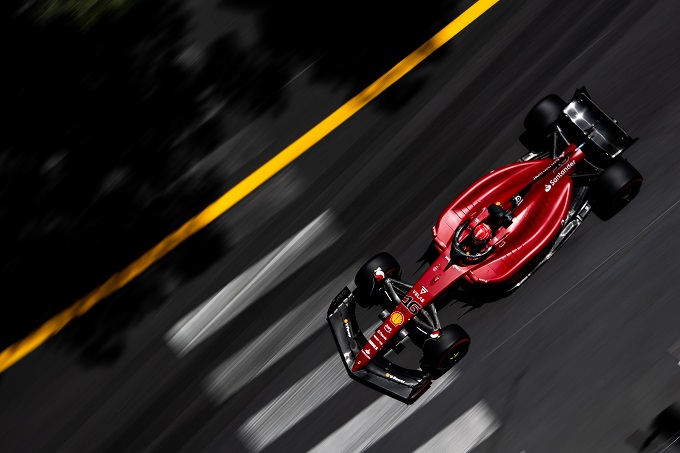


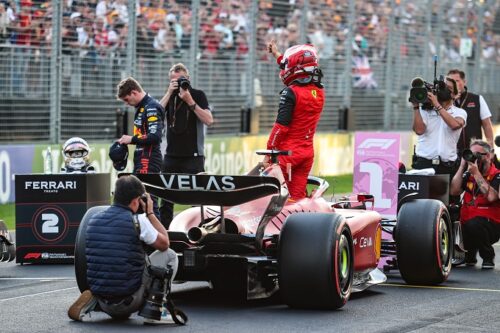
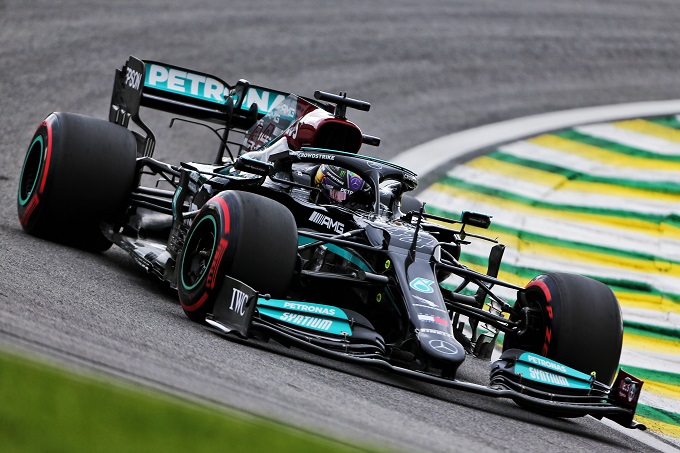

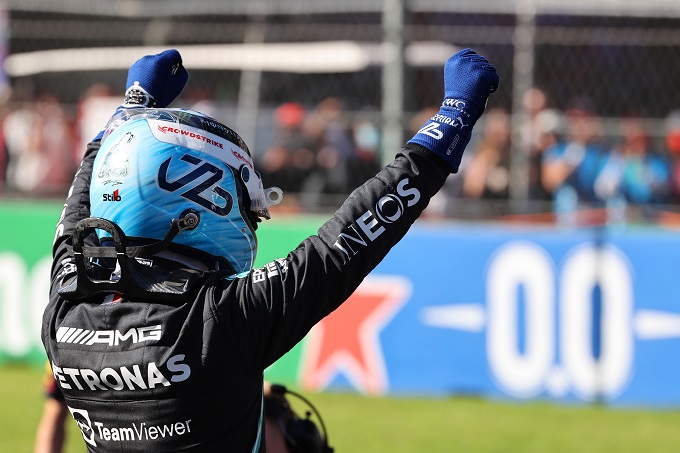
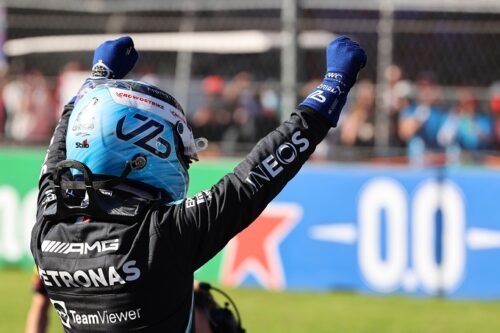
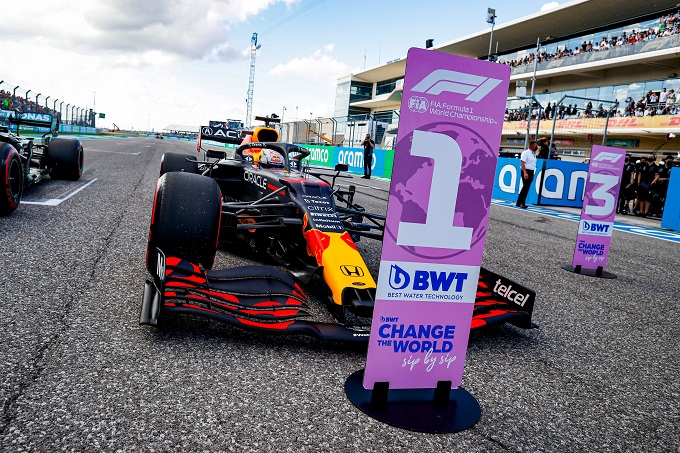
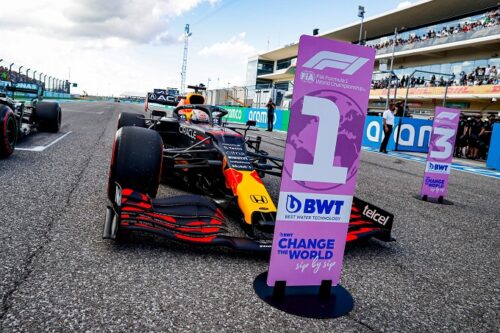
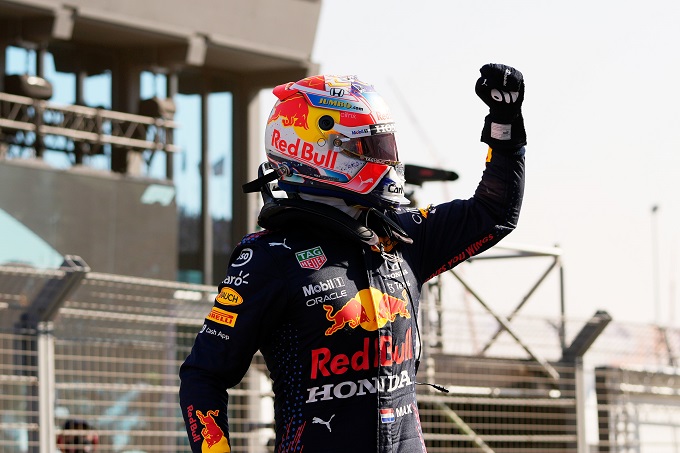



![GP Miami 2024: Live Qualifying [LIVE TIMING AND COMMENTARY]](https://f1grandprix.motorionline.com/wp-content/uploads/2024/05/diretta-qualifiche-gp-miami-2024-1024x683.jpg)
![GP Miami 2024: Live Qualifying [LIVE TIMING AND COMMENTARY]](https://f1grandprix.motorionline.com/wp-content/uploads/2024/05/diretta-qualifiche-gp-miami-2024-500x334.jpg)
